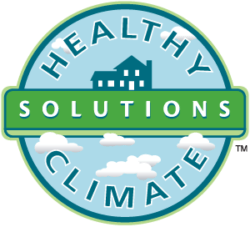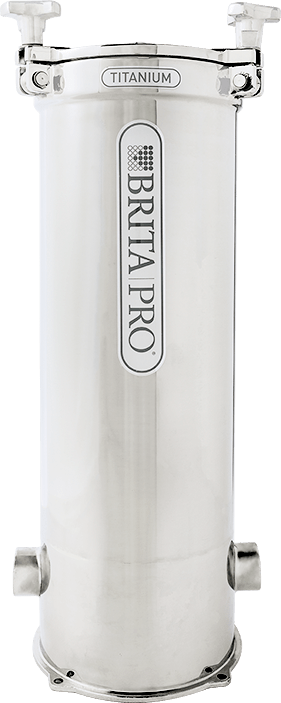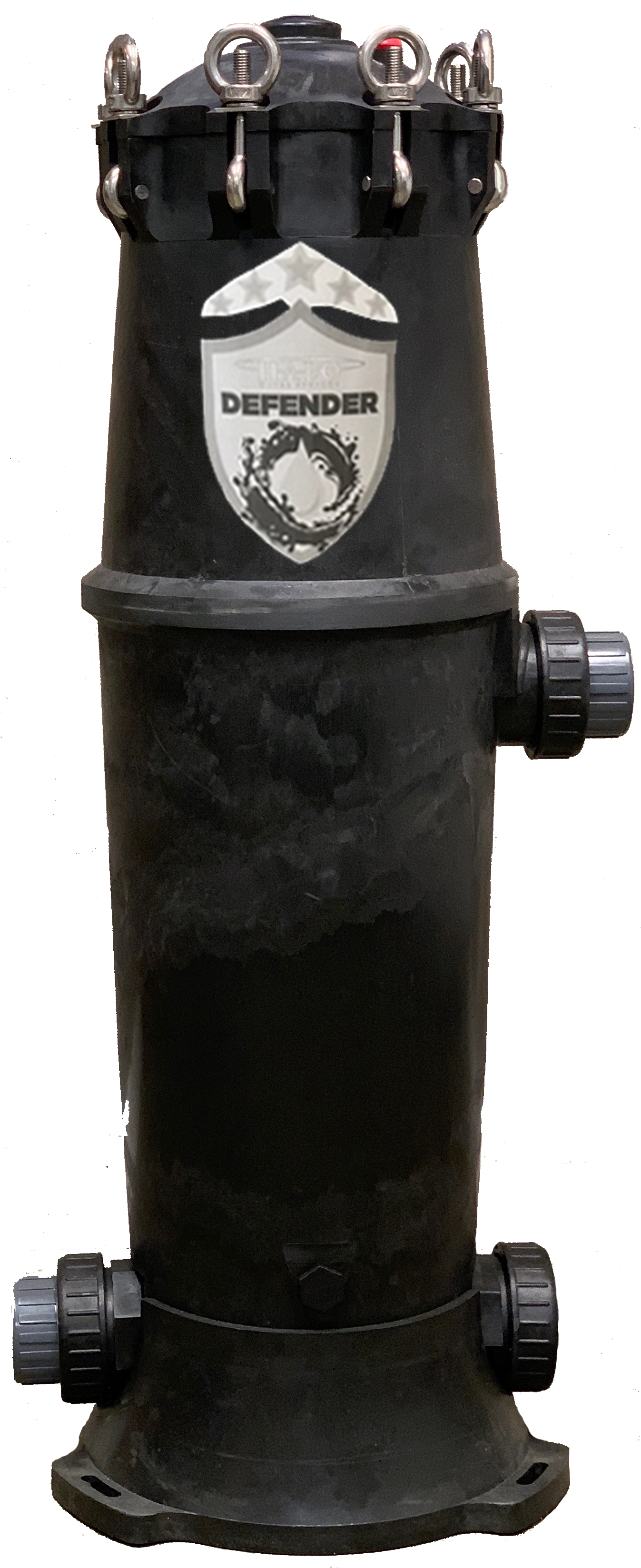What Are PFAS Chemicals in Water?
In the area of environmental and home quality of life and health, PFAS are a class of chemicals that’s worth learning more about. PFAS (pronounced PEE-FASS) chemicals have been around since the 1940s and unfortunately, they won’t go away anytime soon. In addition, they exist in a broad range of forms. The short of it: The more that scientists and researchers learn about them, the greater the concern that public and personal health authorities are having about PFAS.
In this blog post, we’ll provide current information from the National Centers for Disease Control and Prevention (the CDC) and the Colorado Department of Public Health and Environment (CDPHE) about PFAS chemicals, what they are, their potential health effects, and the most common sources in our environment and daily lives.

We’ll also provide an introduction to products that can help mitigate PFAS in your home’s water supply. Water is one of the critical areas, among others, where these chemicals are found to be present.
What Are PFAS Chemicals?
PFAS is short for “per- and polyfluoroalkyl substances.” These substances are a group of chemicals used to make fluoropolymer coatings for a wide range of products, and are present in many high-caliber resins and chemical lubricants. Their ability to resist water, heat, and grease makes them attractive for many uses.
PFAS chemicals are often used in home, commercial, and industrial products and applications, including – but far from limited to – clothing, furniture, and food packaging (longer list below). Some sources refer to PFAS as “forever chemicals” due to their persistence in our environment.

PFAS substances have been found in drinking water, at what are currently considered to be relatively low levels, and recent research has shown that PFAS chemicals may often be present in municipal water supplies. These supplies are normally, routinely monitored and treated (if needed) to ensure that safe levels established by the Environmental Protection Agency (EPA) are maintained.
Regardless of these safeguards, more and more homeowners and other interests are taking additional steps to further reduce potential exposure to PFAS chemicals. Currently, there are no federal regulations addressing PFAS, but a growing handful of states, including Colorado, have begun taking regulatory action (albeit limited, in the greater picture) in the areas of food packaging and personal care products.
PFAS vs. PFOS
In case you’re confused and are more familiar with an acronym with a slightly different spelling, PFOS, these potentially harmful chemicals are considered to be a subclass of PFAS chemicals. In other words, PFOS are a specific type of PFAS chemical. So are PFOAs, which are often mentioned in relation to plastics, rubber, and other related products.
So much for the confusing acronyms. Unfortunately, this list isn’t very short.
PFAS In Our Environment
 According to the CDC and the CDPHE, there are numerous potential sources of PFAS in our environment, virtually all of them the result of a manufacturing process. These chemicals may be found in stain- and water-resistant carpeting, adhesives, firefighting foam (for many, that’s a sad subject all its own), nonstick cookware, electrical wire insulation, coatings for certain storage products, packing material, furniture and wood stain, tents, ski wax, umbrellas, water-repellant sprays, and water-resistant clothing such as rain jackets. In addition, PFAS chemicals may be found in cleaners and personal care products such as dental floss, nail polish, and makeup. This is still a partial list.
According to the CDC and the CDPHE, there are numerous potential sources of PFAS in our environment, virtually all of them the result of a manufacturing process. These chemicals may be found in stain- and water-resistant carpeting, adhesives, firefighting foam (for many, that’s a sad subject all its own), nonstick cookware, electrical wire insulation, coatings for certain storage products, packing material, furniture and wood stain, tents, ski wax, umbrellas, water-repellant sprays, and water-resistant clothing such as rain jackets. In addition, PFAS chemicals may be found in cleaners and personal care products such as dental floss, nail polish, and makeup. This is still a partial list.
PFAS in Our Water & Food Supply
So, how do these chemicals make it into our food and water? In the case of our water supply, most commonly this happens when facilities that handle PFAS (such as manufacturing plants or wastewater treatment facilities) are located near a water source. These highly soluble substances can travel through wastewater and contaminate the water, soil, and air surrounding the factory, and eventually find their way into municipal water supplies, as well as local farms, if any. It’s just a short step from there into our drinking water and our food.
PFAS chemicals in a wide range of discarded or used products can also find their way into soil and water simply by breaking down, over time, leaching and spreading into the surrounding environment. In either case, if farmland is located in the vicinity, crops can become contaminated and these chemicals can end up being consumed with your meals.
Another way that PFAS chemicals can enter your food supply is through consuming fish that have ingested contaminated nutrients or water. Lastly, consider that certain food products were once commonly packaged in plastics and paperboard that contained PFAS, and that practice has not yet been totally abandoned in some areas.
Potential Health Impacts of PFAS Chemicals
While research is ongoing and not 100% conclusive, many studies point to potential negative health impacts for those exposed to PFAS chemicals, particularly people who are considered more sensitive or at-risk, such as children, the elderly, or women who are pregnant or breastfeeding. While we always urge you to do your own research and come to your own conclusions, these studies certainly give our team reason to be cautious when it comes to this class of chemicals.
Potential health concerns related to PFAS currently include:
- Increased cholesterol levels and risk of obesity
- Decreased vaccine response in children
- Decreased infant birth weight
- Increased risk of prostate, kidney and testicular cancers
- Possible links to breast cancer
- Increased risk of high blood pressure and preeclampsia in pregnant women
- Birth defects
- Decreased fertility
- Delayed development in children
- Changes in liver function
- Changes in thyroid function
- Interference with the body’s natural hormones
Our goal here is not to be engaging in scare tactics for the sake of sales, but we feel obligated to mention that according to the EPA, breast milk from mothers with PFAS in their blood, and formula made with water containing PFAS can potentially expose infants to PFAS, and it may also be possible for children to be exposed in utero during pregnancy.
We must reiterate that research is still being done and general consensus has not been reached in the medical and health community – but when it comes to your health and considering the evidence that’s already available, it may be a good idea to play it safe and take extra precautions, especially if you or someone in your home falls into one of the more vulnerable categories.
Testing Your Home’s Water for PFAS Chemicals

Water testing is always the first step when you have concerns about what may be in your home’s water. Whether you’re on municipal water or you have a private well, the Colorado Department of Public Health and Environment (CDPHE) provides a variety of testing programs directly to homeowners and others that may be a good match for your needs. Depending on the county you live in and your specific circumstances, you can also contact your local health department for advice on the best way to proceed.
With regard to the merit of having your blood tested for PFAS, as has been suggested by some sources, we advise our readers to speak directly with your trusted physician for advice. Initial research seems to indicate that there may or may not be enough scientific data available currently to support the value of taking this testing approach. This much we can certainly say: Our team at Save Home Heat is definitely NOT qualified to answer PFAS questions related to your health; we have simply reported on the current state of affairs to the best of our ability.
Water Quality Solutions for Your Denver-Boulder Home
PFAS filtration is a unique process and has different requirements than filters that address other types of chemicals and minerals. There are a range of water filtration products available that may do the job, some more effectively than others. Their designs address a variety of applications in and around the home.


The most notable solutions include point-of-use (undersink) filters, whole-house systems, and filter-style water pitchers you can refill at the tap and put in the refrigerator. We don’t strongly recommend one type of solution over another. There are a number of factors that must be taken into consideration when looking at water filters to address PFAS concerns, including budget, testing data, and projected time you plan to stay in your current home.


Quality Whole-House Filters for PFAS Reduction
Our water quality team at Save Home Heat currently recommends two products for whole-house PFAS chemical reduction: the HALO Defender from HALO Water Systems, and the Brita Pro PFAS Titanium Series. We’ll be talking more about these two products in an upcoming blog post. If you have immediate questions or concerns, in the Denver-Boulder area, please don’t hesitate to contact us to learn more.
Your Trusted Team for Water Filtration in the Boulder-Denver Area
 If you’re interested in permanent water filtration solutions that address PFAS chemicals or any other water contaminants that you have concerns about, please contact our team today for advice on testing, if needed, or to arrange for a highly informative, low-pressure, free install quote for your home in the Denver-Boulder metro area.
If you’re interested in permanent water filtration solutions that address PFAS chemicals or any other water contaminants that you have concerns about, please contact our team today for advice on testing, if needed, or to arrange for a highly informative, low-pressure, free install quote for your home in the Denver-Boulder metro area.
Please contact me to schedule a PFAS water treatment quote for my home!





